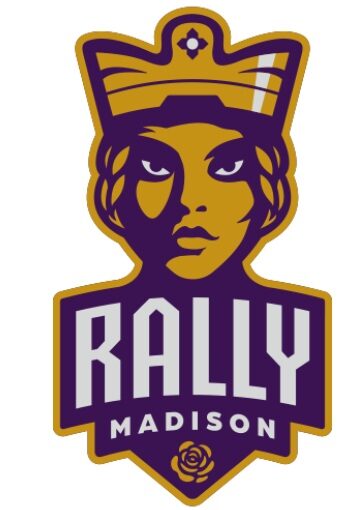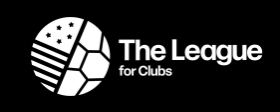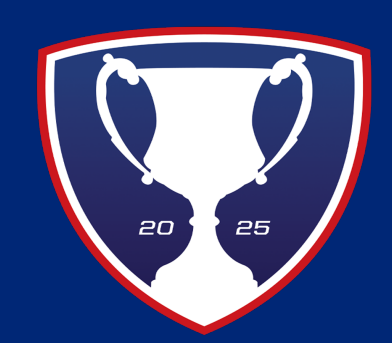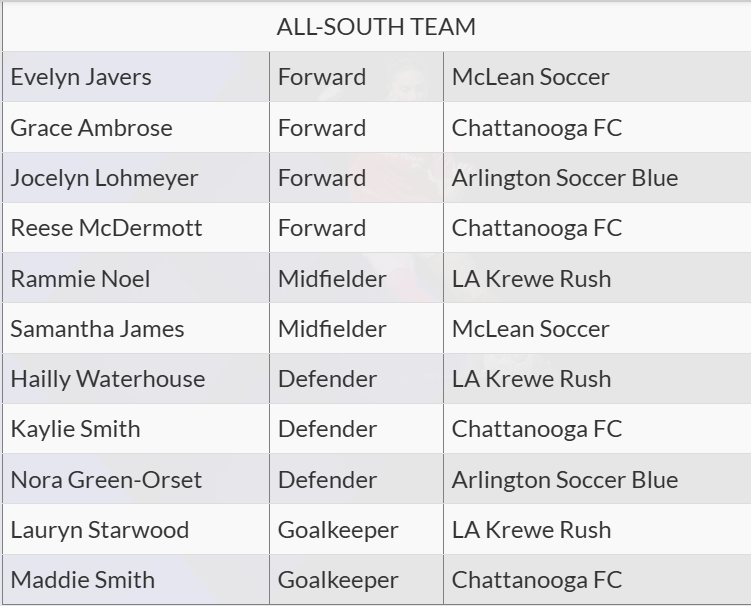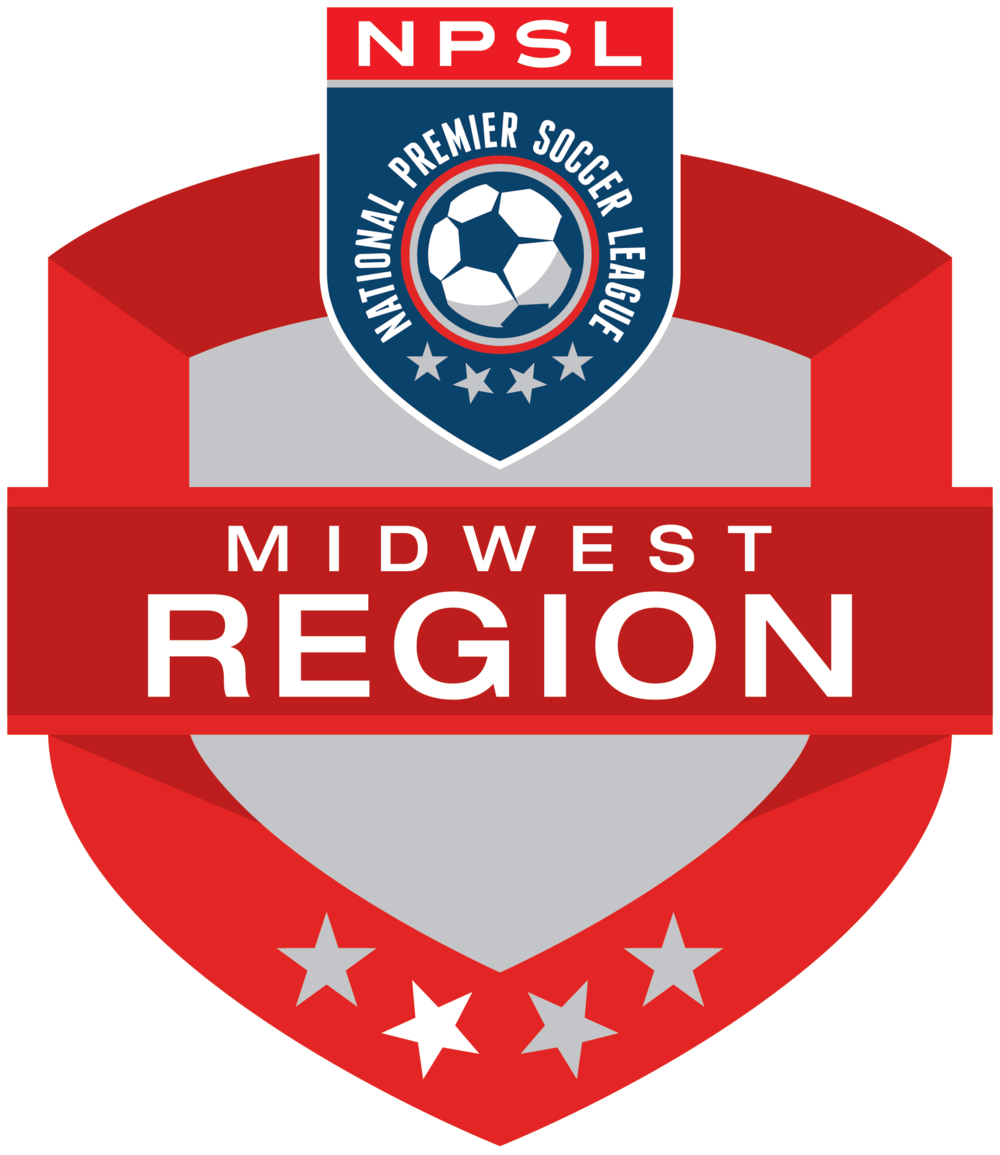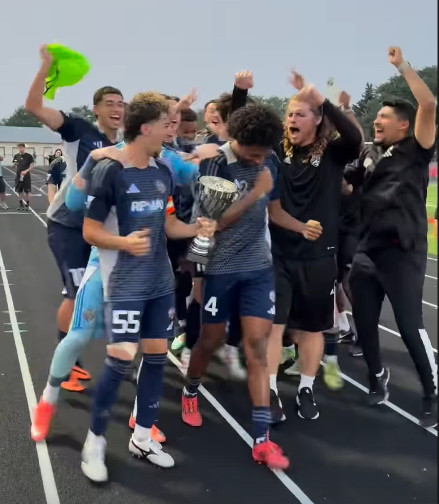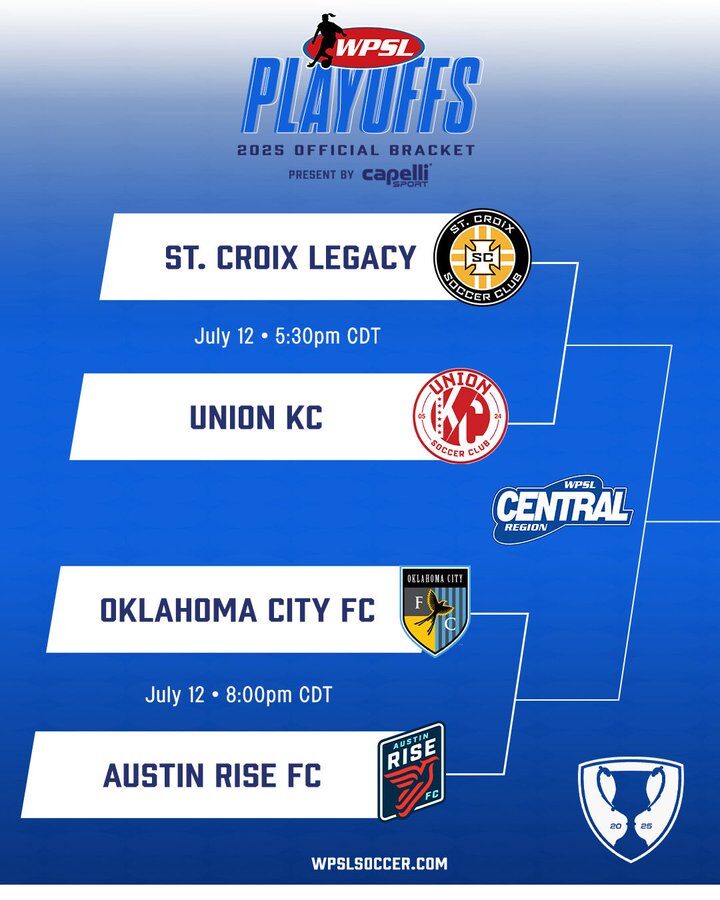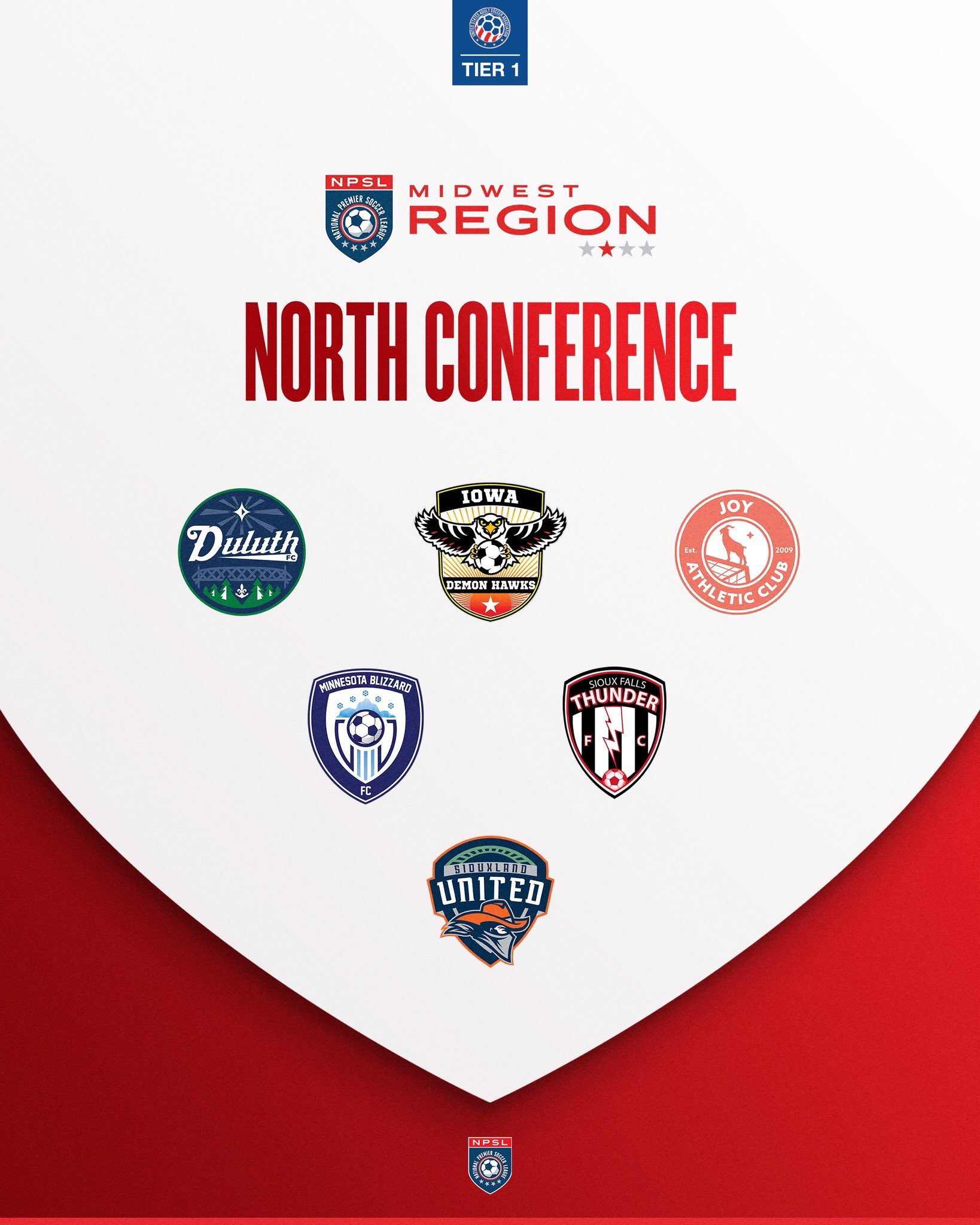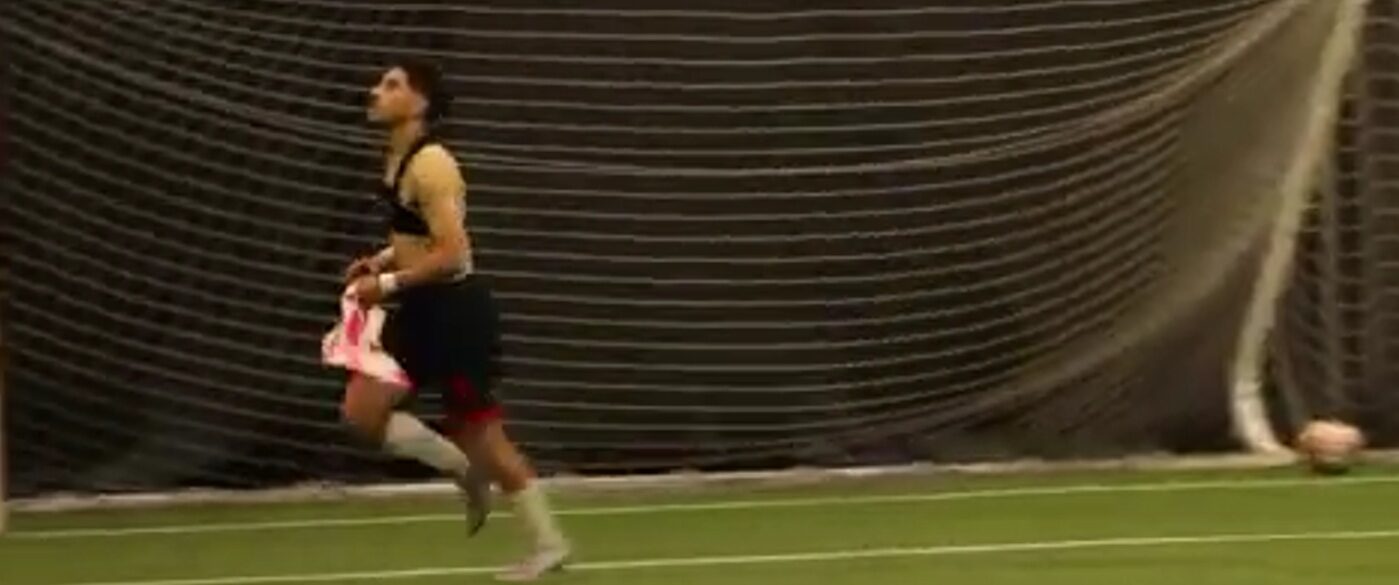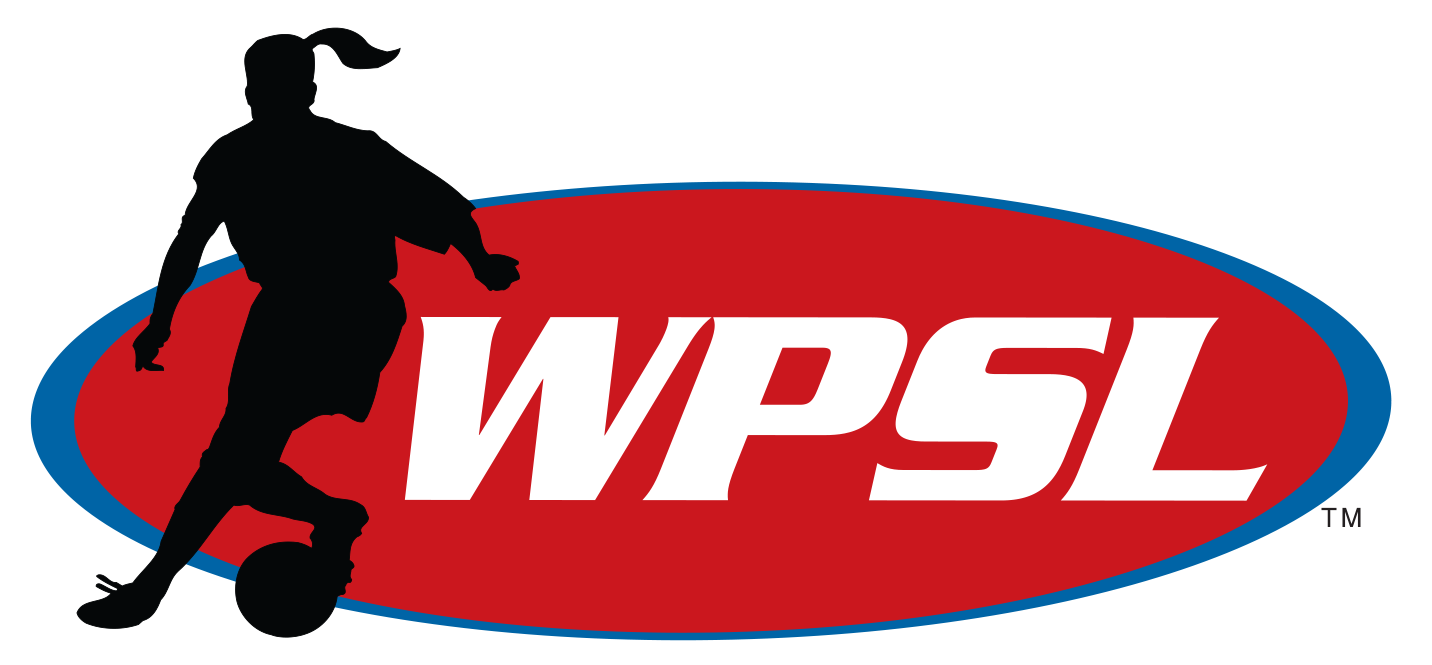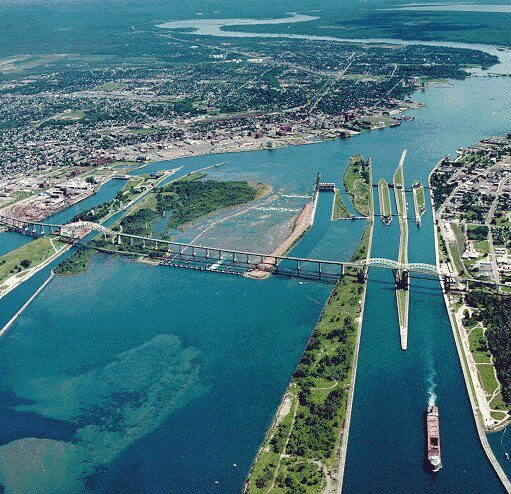Inspiration on the Isthmus - Rally Madison FC begins life in USL W this Summer
The first steps for professional women's soccer in Madison, WI will be made by a pre-professional side with a roster which will "reflect a lot of home grown talent from Wisconsin that has either hasn't had the opportunity to play pre-professionally previously or traveled to do so.", according to newly named the Director of Retail at the newly named Rally Madison FC, Alyssa Bruce. Rally Madison debuts this coming Summer in USL W League.
Speaking to Northern Lights Football, she added "the technical staff has a lengthy history coaching elite level talent on the girls side in southern Wisconsin, and are excited to have an opportunity for those athletes to come back and play on their home turf. The goal is still to play professional women's soccer in Madison. As more professional leagues develop for women's soccer in the US, we will continue to vet if they are a fit for us. Our current stadium would need improvements, which is currently barring us from joining the Super League. We do hold the rights for a Super League team." The 1920s construction Breese Stevens Field needs women’s specific locker rooms and infrastructure, new field turf and renovated facilities to make a first division club viable. Furthermore, the Club will need to secure a full-sized, indoor training facility to make participation in the Super League season possible.
Speaking in 2023, Forward Madison partners Conor Caloia and Vern Stenman said “Since we launched professional soccer in Madison in 2019, we have had the goal of bringing the first professional women’s soccer team in the State of Wisconsin to Madison. We are now one step closer to this goal and we look forward to working with the City of Madison on the necessary improvements to make this goal a reality.”
The name Rally Madison FC is inspired by the Women’s Suffrage Movement throughout Wisconsin and the United States in the early 1900s, with Wisconsin as the first state to ratify the 19th Amendment on June 10th, 1919.
Bruce added that “the name, ‘Rally’, is a commitment—a call to action. We are rallying Madison together to support, uplift, and celebrate women’s soccer. We believe in creating an inclusive, loud, and passionate fanbase that shows up for every match. Every ticket sold, every song sung, every cheer from the stands is an investment back into the program, funding the development of our youth pathway and cementing Madison as a hub for women’s soccer excellence. This is our city’s chance to show the nation what true support for the women’s game looks like.”
The crest includes nods to the female statue atop the State Capitol building just 8 blocks from Breese Stevens Field, the Madison flag and a yellow rose as a direct reference back to the suffragists. The club's colors also reflect back to that struggle.
Talking of Madison, Bruce is confident that Rally Madison FC "will fit nicely alongside already strong women's brands in our market" including LOVB Volleyball, Madison Night Mares Softball and the University of Wisconsin Badgers as a premier women's sports organization. "We are committed to providing the same level of game experience as Forward Madison FC with Rally Madison FC. We hope that Rally Madison FC will provide role models for the youth in our community both on and off the field, and show young girls that they can continue to play a high level of soccer in Madison. We hope that Madison will continue to grow as a mecca of women's sports as we help to fill a void of pre-professional soccer in our community."
This mission will be further realized through the Rally Girls Soccer Fund, which aims to bridge the financial and logistical barriers that prevent girls in the Madison-area from accessing and continuing to participate in soccer.” The basis of the fund is to create more opportunities for girls in our community to start playing soccer, and support programming to keep them playing at a high level.
The club will donate $1 from every ticket sold to the fund each year with the aim of providing grants at the youth, high school, and professional level for girls and women in our community. "We have 3 founding pillars: Grow, Connect and Inspire. Our first grant was given to the Madison East High School Girls Soccer program that plays their home games at Breese Stevens Field." The grant will provide a soccer ball for each athlete to take home, and replenish their practice supply. It will also cover new warm-ups for their varsity program, which has a mixed set from previous seasons. MEHS Girls Soccer has a large program on the girls soccer side, and for many this is their first time playing competitive soccer.
The League for Clubs announces true semi-professional men's league for 2027
The League for Clubs (TLfC) has announced today its intentions to launch a new league that will aim to bridge the gap between amateur and professional soccer in the United States. It is the latest attempt to launch a full-season amateur league, following in the footsteps of NISA Nation and NPSL Founders Cup. The league will be sanctioned through the US Adult Soccer Association, who sanction the existing amateur league and competitors such as NPSL.
The new league is expected to run from April through October. Regular-season play will be regionally based to help reduce travel expenses. Regional champions will advance to a National Finals event, where the winning club will receive an unspecified cash prize.
So what happened to those earlier attempts at full season amateur play? Well, the National Independent Soccer Association stumbles along, albeit with their supposedly fully professional first division often playing host to players still owed their fees. NISA Nation has laid the groundwork for the regionalized schedule touted by TLfC, with the regional champions then progressing into a playoff of sorts for a National Championship. There are affiliated leagues around the country, although promotion and relegation are matters of debate rather than mandatory based on sporting performance. It is unclear how much players in NISA Nation are paid.
The National Premier Soccer League’s attempt at semi-pro came to an ignominious end as the majority of the clubs chose the NISA path instead.
In a unique move which echoes the “non-league” National League system in England, clubs will be permitted to roster both compensated and non-compensated players - allowing for a range of circumstances currently not taking place in US soccer, including college athletes with Name, Image and Likeness deals playing alongside post-college amateurs or professionals. This brings into existence the first real semi-pro league in America, where players are paid, but contractually able to perform another job to make a living. The English system is full of electricians, plumbers etc. who also play footy at the weekend.
Up until now, rosters in USASA leagues had been either entirely amateur or entirely professional, although leagues could host both pro and amateur athletes on different teams. The USASA rules have this to say:
In addition to player registration fees set by USASA, proof of the appropriate documents
and fees to reinstate a player to amateur status or to register a player as a professional as
required by USSF policies must be submitted to USASA.
Speaking about the new division, Casey Cantor, TLfC Commissioner said
“We are excited to introduce a new competitive tier above standard amateur play, helping bridge a long-standing gap in the U.S. soccer landscape on the pathway to the professional level. We look forward to the potential opportunities this pro/am league can provide for clubs, their players and staff, referees and fans who have the desire to compete in, work at, or support a local club at the highest levels of soccer in America.”
Progress With Unity: A fan's perspective of a WSL match
Manchester United FC 0-1 Aston Villa FC
I grew up in the countryside about a half-hour northwest of today’s venue but my weekends were spent at the massive behemoth that is Old Trafford, home to Manchester United’s men’s team since 1901. The women’s team, on the other hand, has had a peculiar history (which I touched on on the Empower Women’s Football podcast recently).
Whilst Lancashire has a long track record of women’s football, there was a ban on women’s football on the grounds of FA affiliated clubs between 1921 and 1971 and it was only as this ban came to a close in 1970 that any efforts were made to create a de-facto Manchester United Women’s first team. United Ladies of Manchester played their games at the men’s training ground The Cliff in Salford. Manchester United Supporters Club Ladies began operations in the late 1970s and in 1989, the side formally affiliated with the men’s club.
That partnership lasted until 2005 when the current owners deemed the women’s side “non core” and unprofitable and decided to completely wind up operations.
It was a long 13 years before the club deemed this a mistake and re-established a women’s side in 2018 - this time based at Leigh Sports Village, currently called The Progress with Unity Stadium due to a regeneration plan of the same name by LSV owners Wigan Council.
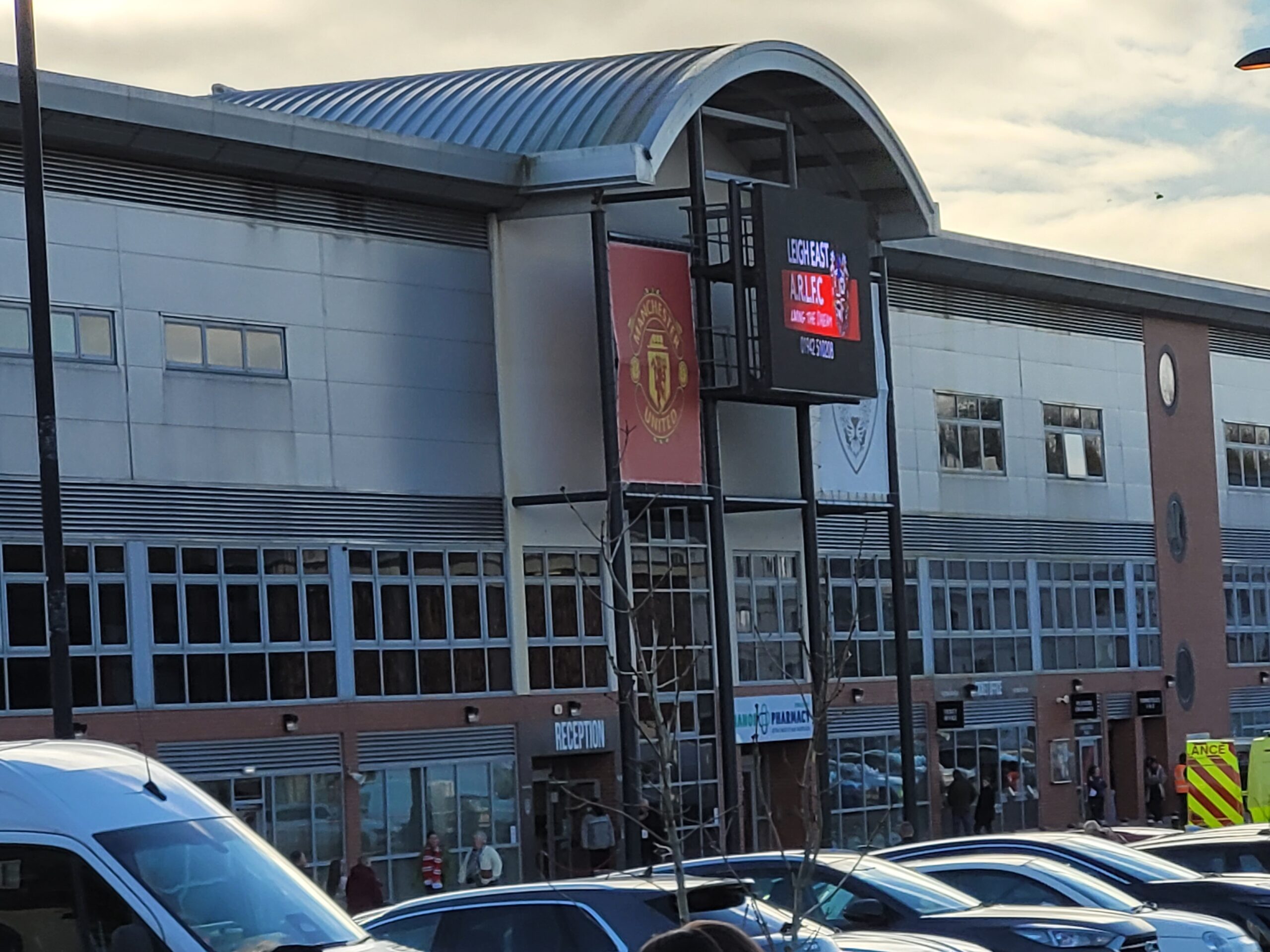
It's an odd time to be back, since while Ruben Amorim struggles to knit together a coherent sequence of results in M16, the hosts today are making quite a fist of it amongst the surroundings of Leigh, a stadium which primarily hosts the Leigh Leopards Super League Rugby League team. This match was originally scheduled for Old Trafford, but the club pulled out, saying that the UWCL match with Paris Saint Germain on the 10th would be there “instead”. While two days is a fast turn around, the grounds crew at Old Trafford have managed it with the men before.
Aston Villa women were founded in 1973 as Solihull FC as time ran out on the FA Ban, and the club affiliated with Villa in 1989 before changing their name in 1996. In the years since, they have bounced between the first and second divisions repeatedly - settling last with successful elections to the WSL2 and the Championship in 2014 and 2018.
All of which brings me back to the match I'm here with my family to see. Thank you to my Dad and partner Nat for arranging it all.
The Villans entered the day in 6th position. In contrast, the Red Devils were unbeaten and in position for Champions League again. Both sets of fans congregated without trouble at the Whistling Wren pub next door to the stadium before making their way inside.

It was Remembrance Day weekend, hense the poppy at half-way and a minute's silence.
 United dominated possession, finishing with marginally more shots (and on target) and a fractionally higher xG but were lacking in that critical final touch, with Elizabeth Terland starting at the spear of the attack and then Melvine Malard coming off the bench.
United dominated possession, finishing with marginally more shots (and on target) and a fractionally higher xG but were lacking in that critical final touch, with Elizabeth Terland starting at the spear of the attack and then Melvine Malard coming off the bench.
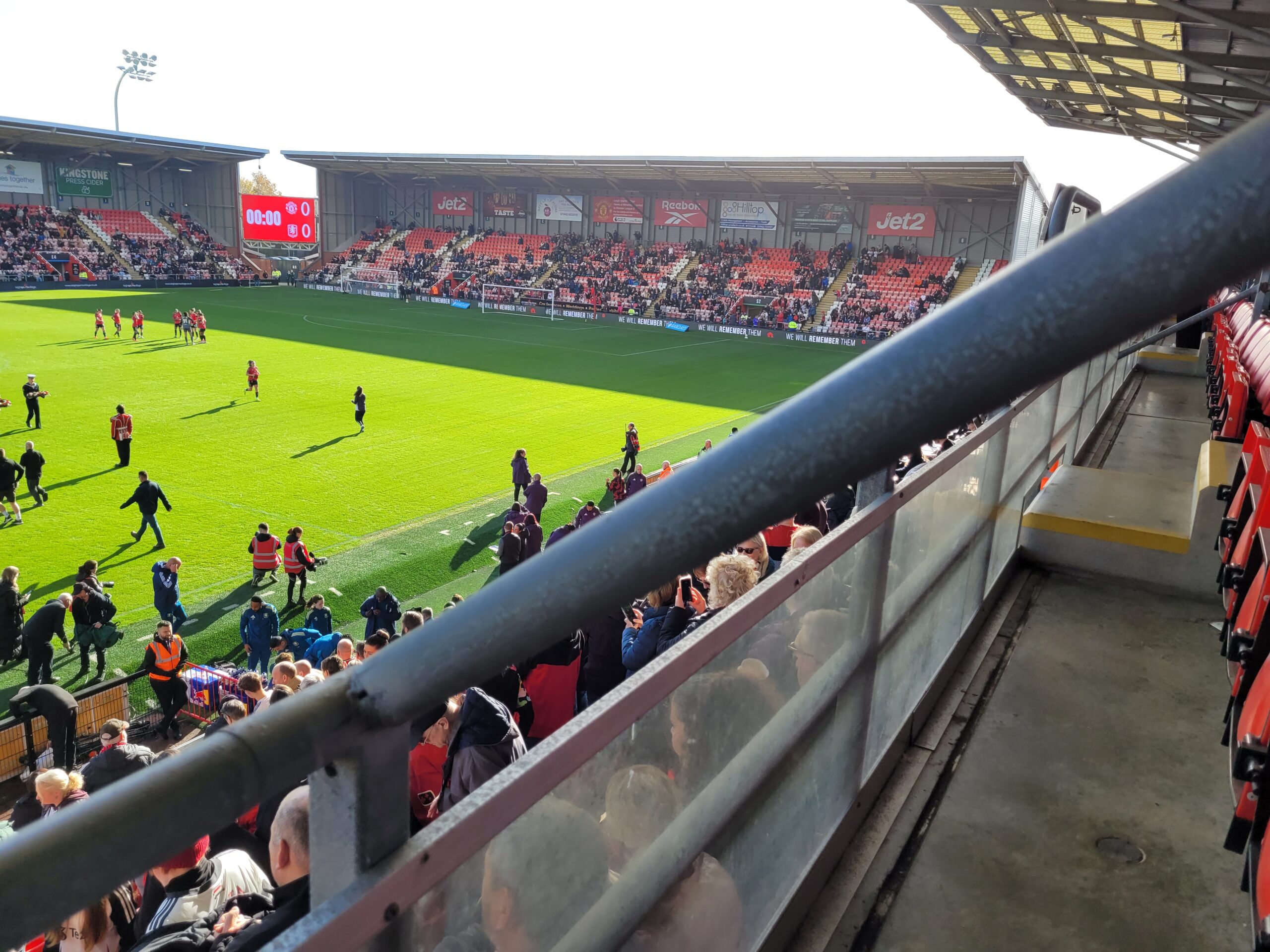


It is probably instructive that Villa’s Irish center back Anna Patten won the FotMob player of the game. The same source has that xG at 1.02 to 0.99, so maybe a goalless draw would have been a fair result. The 3434 people in the stands and boxes at the 11000 seater stadium saw a game with plenty of endeavour, however, as Kirsty Hanson marauded down the Villa right wing and Jayde Riviere linking up with Fridolina Rolfö for the hosts.
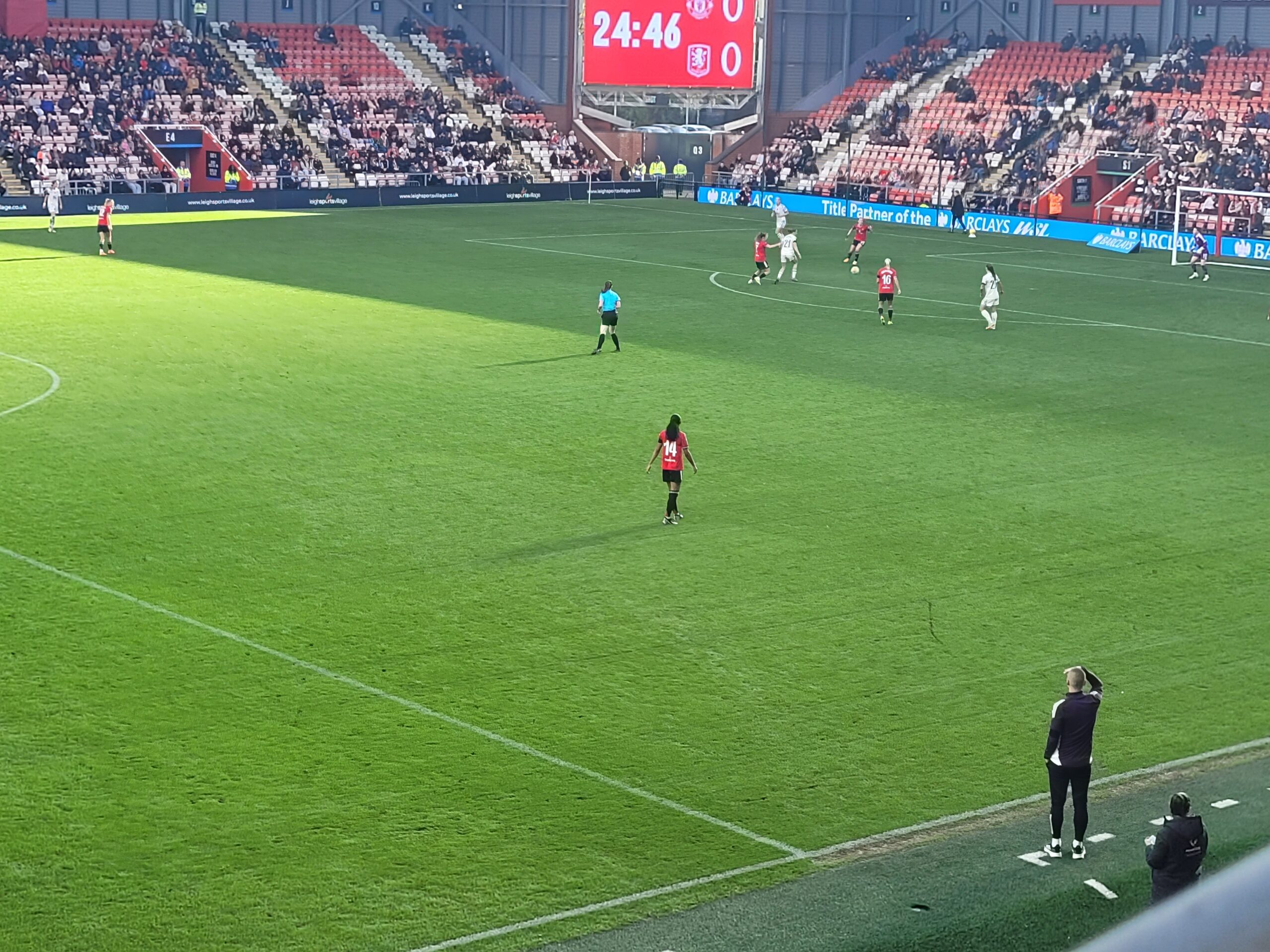
The deciding goal, one of only 3 shots on target for the visitors, came from Miriael Taylor in the 35th minute. A Lynn Wilms corner was spectacularly punched clear to the edge of the box by Phallon Tullis-Joyce but the ball was expertly returned at mid-height into the bottom right hand corner of the United goal by Taylor through the crowd. The Villa fans in the opposite corner were ecstatic. To give the visiting fans their share of credit, they were noisy throughout the match and at times kept the ground from being silent as United knocked unsuccessfully on the door.
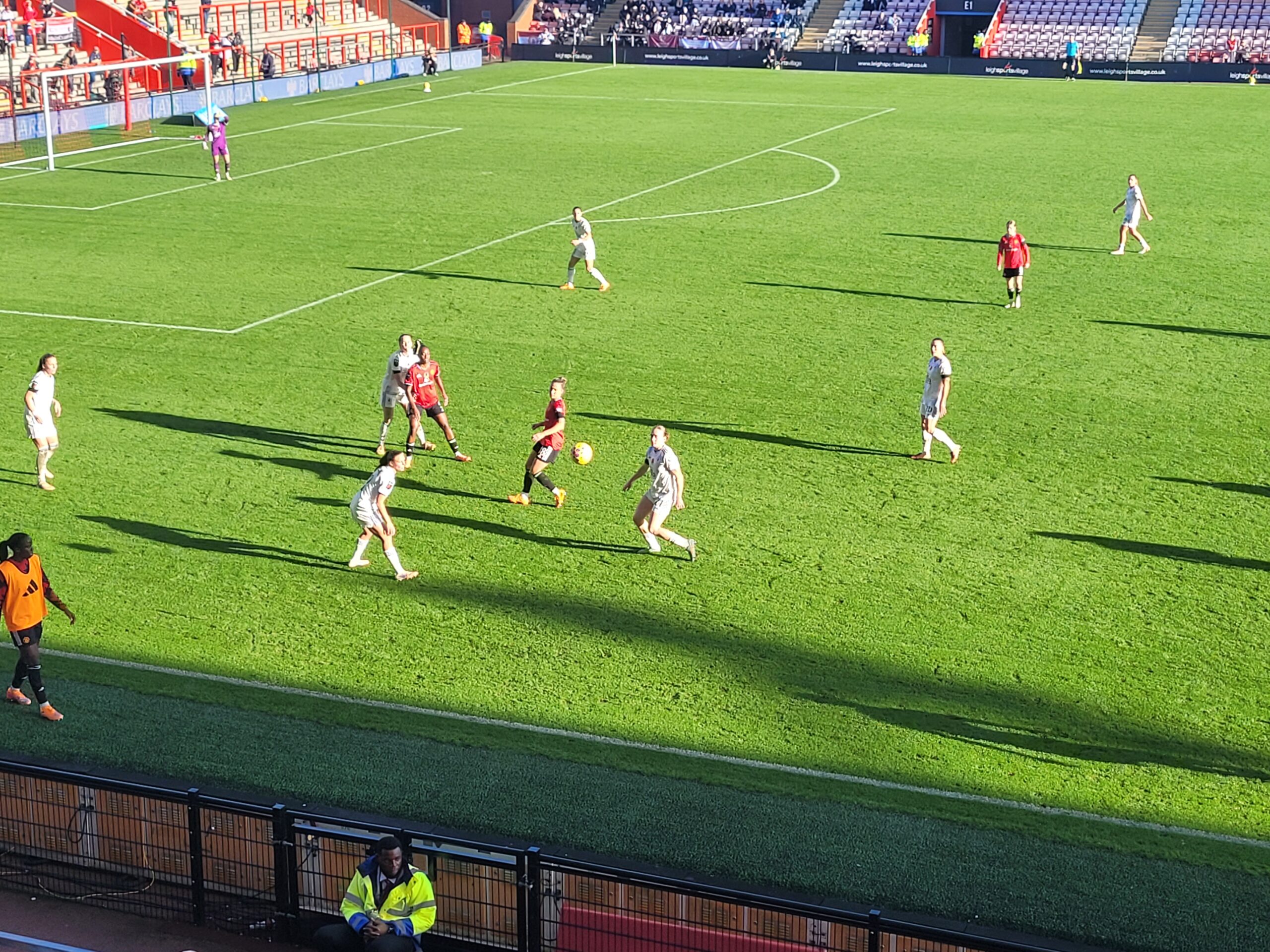
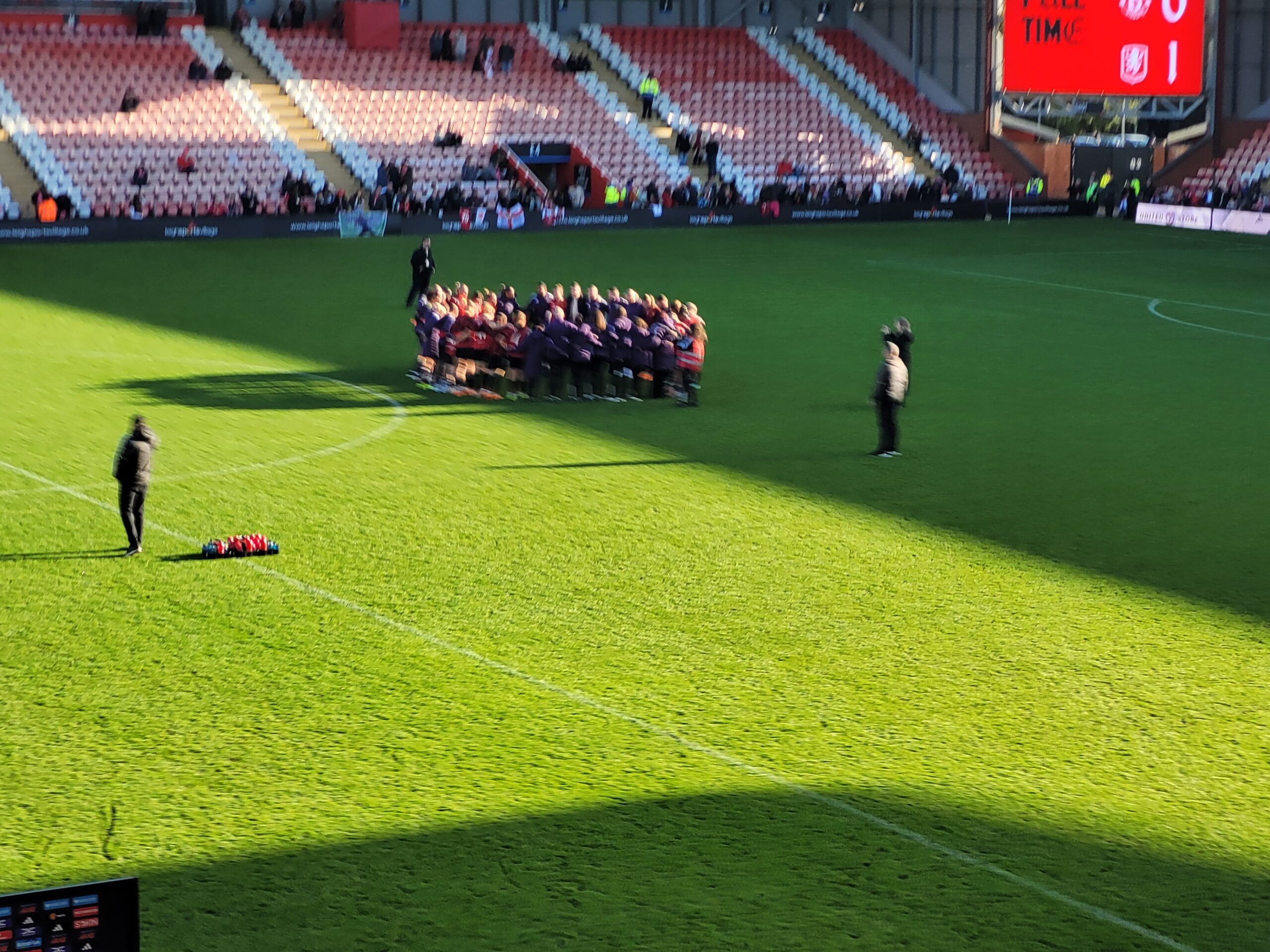
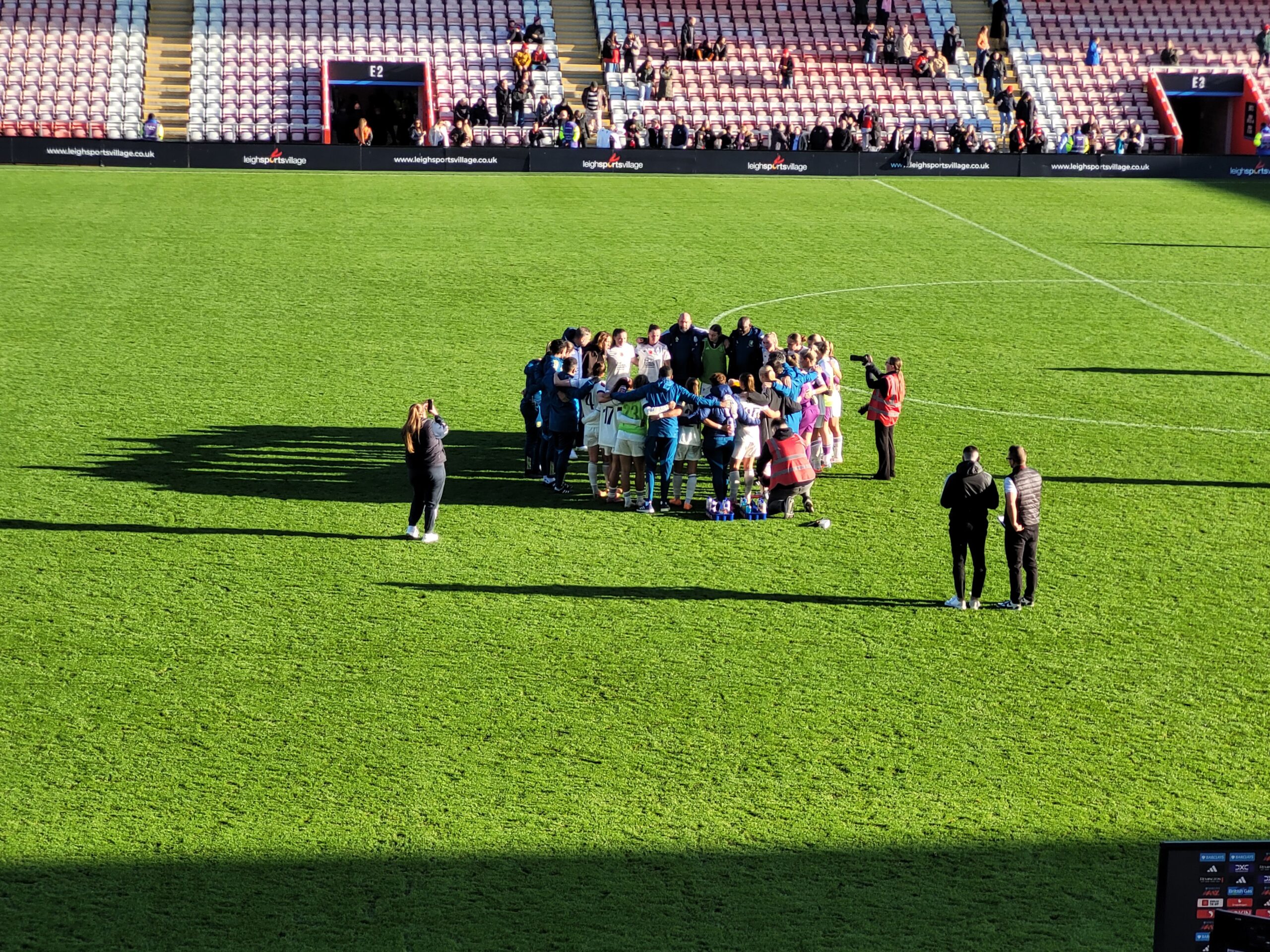
The second half followed the same script, both teams attacking but Villa’s defense blocked at every turn and returned to the West Midlands with all three points, ending United's unbeaten start to the season. On the other hand, Arsenal and Chelsea drew with each other. Chelsea are the remaining unbeaten side.
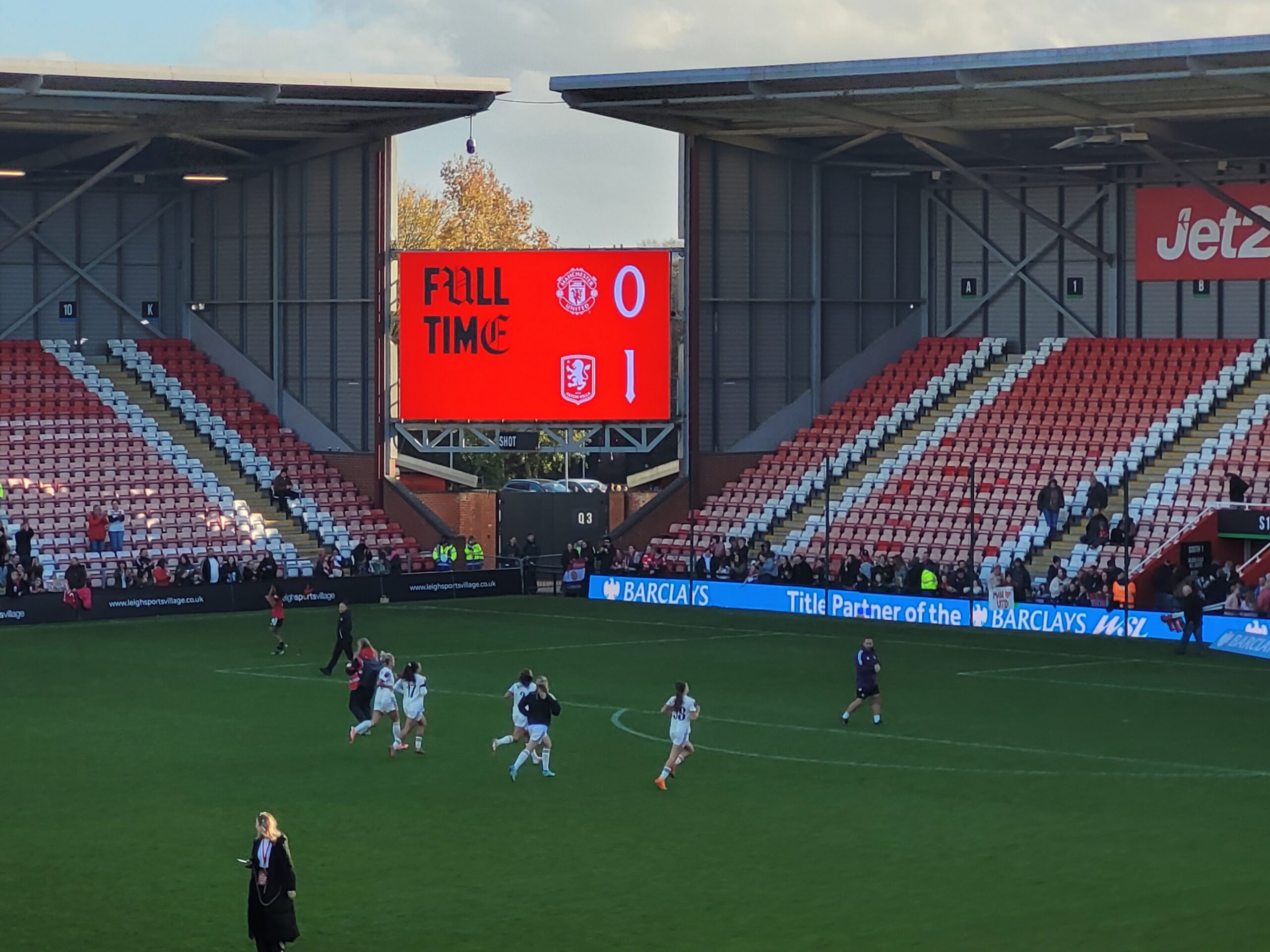

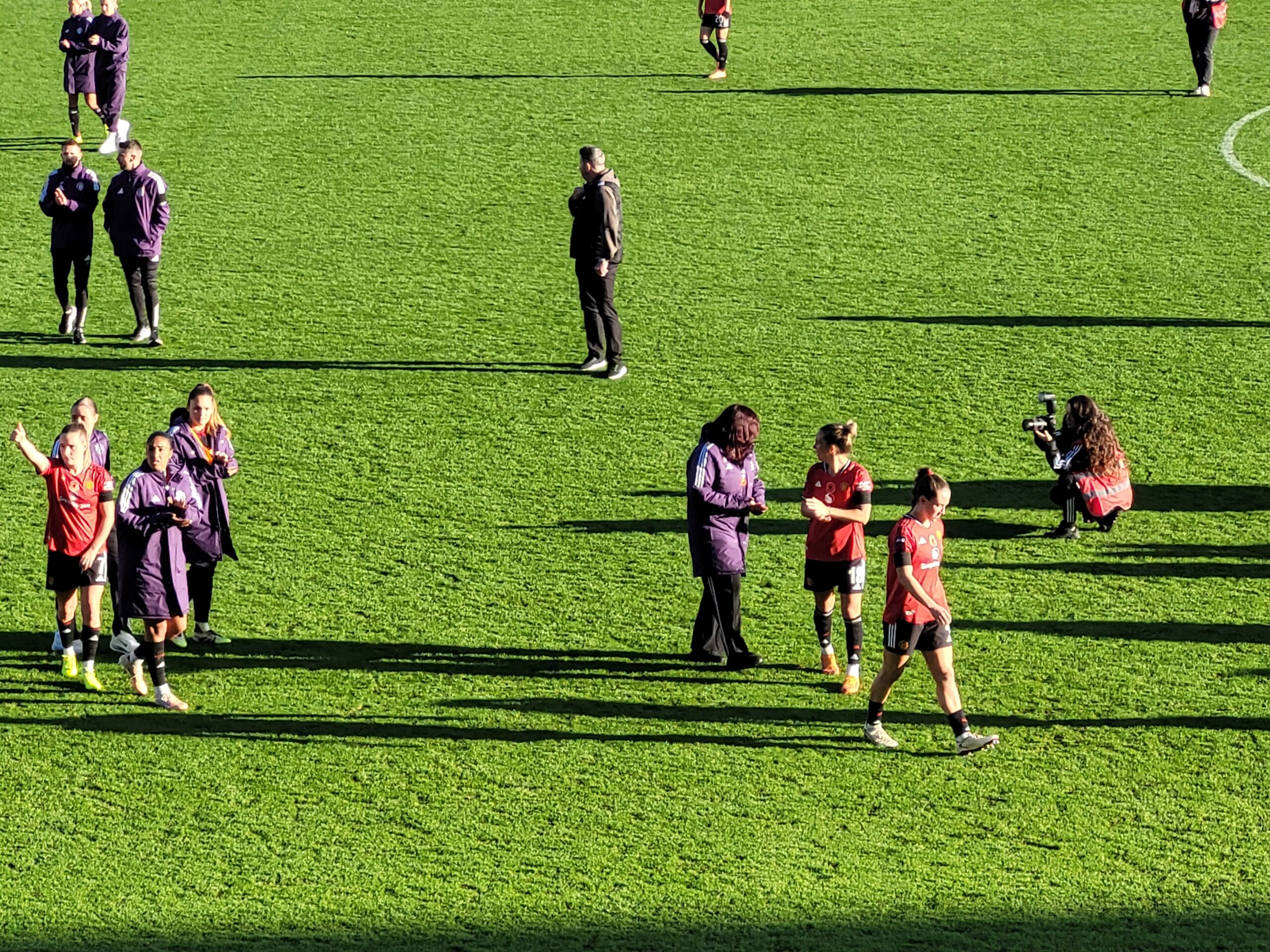
United's next league match is the Manchester Derby against table-topping City this coming weekend. Villa host London City Lionesses.
WPSL Championships Review
The WPSL regular season sprints from May to June, amplifying form and individual performances into poetry as these unpaid athletes strain every sinew. The post-season is a different beast, as clubs opt out and players leave the scene to return to the college sides which are understandably their main concern. Thus it was in the Land of the Lakes where Thunder opted out of the postseason and St Croix Legacy's leading goalscorer Tatum Trettel was unavailable for the Championship run. The same dynamics play out across every division, but the final two sides standing both have veteran rosters with a large handful of graduates not subject to the same tug of war as active student-athletes.
St Croix made it to the national semifinals by winning the Land of the Lakes division, then the North Lakes conference (on penalty kicks). On their first trip to Oklahoma, they beat Union KC and the (thus far unbeaten) homestanding Oklahoma City FC. They've made it through the post-season soaking up pressure like a sponge and unleashing the passing skills of Bella Meier and the speed and finishing of Amara Smith. Smith is typical of the make-up of this tightly knit squad, one of the 11 St Croix academy products, 13 Minnesotans and one of 7 Stillwater area players, having grown up in Lake Elmo, MN. She made her name in Metro United Homeschool before moving on to Minnesota State in Mankato. Meier transferred into St Kates from St Thomas. She is an outlier, a Minnesota Thunder Academy product and the only one in the squad to have been here before (Meier scored a game-winning penalty during Salvo's national runner-up campaign of 2023). While she's one of the few women not to have grown up through the St Croix system, the St Kates senior midfielder is joined on this Legacy roster by five others with ties to the St Paul university, including assistant coach Kate Praetz.
While all but 3 of Legacy's postseason roster are active students and only one is a Division 1 player, 8 of the Sporting squad have graduated college already, and Tiffany Weimer did so from Penn State in 2005. The East Champions could also comfortably field an 11 of active D1 athletes.
The second semifinal was a more even matchup in terms of roster, with Storm featuring 7 graduates and a wide range of D1 schools. While Chattanooga have only 5 graduates, they also showed a number of D1 schools represented.
On the eve of the Championships, the All Region teams were announced, with the places allocated based on the performances in the Regional Semis and Finals.
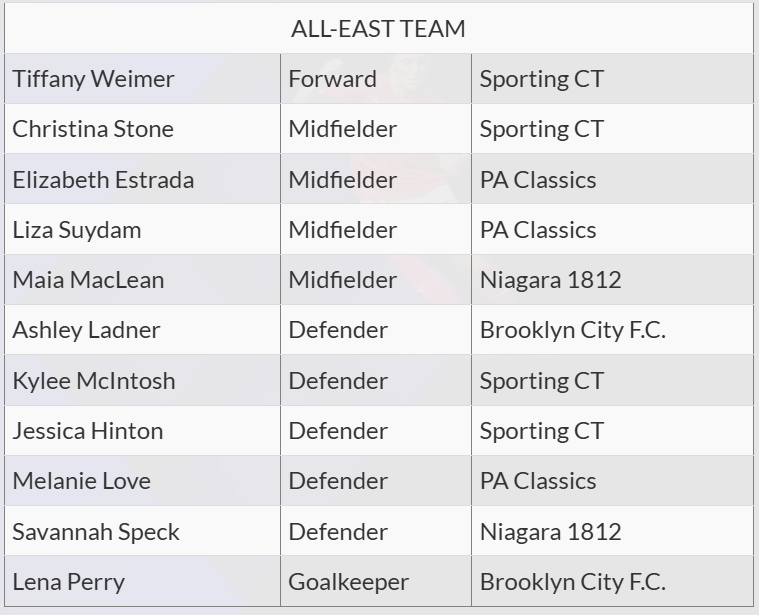

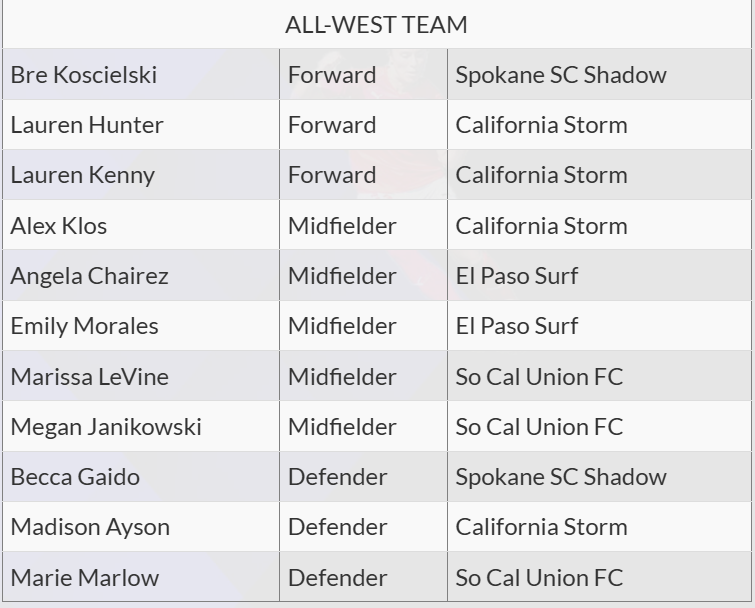 Semi-Finals
Semi-Finals
Sporting CT (East) 4-1 St Croix Legacy (Central)
Legacy took a lead after a speculative free kick whipped in from midfield was deflected past the keeper by Sporting's Kylee McIntosh in the 32nd minute but that would be the high point for Legacy and even the one goal lead would evaporate in the scorching Oklahoma heat before half time. With Sporting happy to pass it until a gap appeared, Amani Jenkins finished off a succession of precision passing along the penalty area in the 43rd minute.
With only five minutes played in the second half, Sporting claimed the lead as Lexi Taylor set up Sporting player coach Tiffany Weimer close in. In the 70th minute, Weimer turned provider in unorthodox fashion as her shot from out wide on the left was acrobatically tipped wide by Hadley Johnson. Unfortunately for the Legacy, Tori Sousa powered home a header from the corner to make it 3-1. The hydration break arrived a minute too late for St Croix and almost immediately after play resumed it was 4-1, Abby Johnson placed it past her namesake in the Legacy goal. Legacy were unable to break through the defense and in particular the attentions of Marist graduate McIntosh.
California Storm (West) 1-0 Chattanooga FC (South)
Having themselves ended Charlotte Eagles' attempt to become the first WPSL repeat champions last year, it is the turn of the West Champions to attempt the trick. Chattanooga on the other hand are in the midst of their first WPSL playoff run.
The first half went by goal-less. The second half saw Storm pinned back by incessant Chattanooga attacking but it was still goal-less by the second half hydration break in the 68th minute. After being thoroughly outplayed, it was Cal Storm who found the winner in the 80th minute. USYNT player Erica Grillione created a shot out of a broken attack and lofted the ball into the top corner from the edge of the box.
Final - Sporting CT 4-0 California Storm
Would it be a first title for the first year team from Connecticut, or would the champs repeat? Sporting set about stamping their mark on the game early.
With only three minutes on the clock, UConn Husky Lexi Taylor fired a shot from outside the box and Storm goalie Abbie Faingold tipped it away for a corner. The set piece was scrambled in at the back post by Emily Senatore of Oxford, Connecticut and Northwestern State in Louisiana. The goal was the first that the Californian side had conceded in 500 minutes.
Taylor was also responsible for setting up the second goal, unable to find a way through on the top of the box but Amani Jenkins rifled it home in the tenth minute.
Storm built back up and fought for possession but with no penetration into the Sporting penalty area. Despite Storm possession, it was 3-0 in the 27th minute as Cara Jordan's cross from the left was connected upon by Abbie Burgess and deflected past Faingold.
Tiffany Weimer clipped a ball from the left side of midfield between the defenders and on to the run of Jordan. Jordan poked the ball past the onrushing Faingold for the fourth in 35 minutes and, it would turn out, the final goal of the game.
The second half of this second match in three days reflected fatigue and 90 degree heat, more than it reflected the scoreline.
Lightning Strikes Twice To Knock Out The Outlaws
NPSL Midwest Regional Playoffs - Michigan Rangers FC 3-2 Siouxland United FC
The ninth-best team in the NPSL this season, Central States Conference winners Michigan Rangers, hosted the nineteenth, Siouxland United, out of the North.
The road team recovered from a defeat to Duluth FC at the end of the regular season to claim the conference title with a win against Joy AC. João Rocha has 6 goals, second only to Phil Caputo of Joy.
Rangers, on the other hand, finished the regular season on top of their conference and won through. Liam Kervik leads the way - with a conference leading 11 goals.
The match started with a couple of golden chances for the home side but they could not find a finish and it would take 44 minutes of play before they secured a goal, pressure down the right by the German Domenic Baumann was capped by a cross by Muskegon, MI's Liam Smith for Grand Rapids, MI's Chris Mendez. Mendez pulled the ball back and slotted home from six yards out.
The night's first lightning strikes came in a five minute spell, led by two Japanese attackers for Siouxland United. Hayato Takayama from Hyogo bundled home the equalizer from a pass by Emilio Madrigal from Laredo, TX in the 54th minute. Kyohei Eguchi, from Kagoshima curled a corner high and deep to the side netting of the back post for an Olimpico. However, the natural kind of lightning struck and the game entered a weather delay of 90 minutes with the Outlaws ahead by one.
Play after the resumption at 10pm was all one way, and it was Michigan Rangers' turn to strike with lightning speed. The Nigerian substitute Adetunji Ifaturoti burst through the middle to equalize with only five minutes played and two minutes after that, Mendez got his second of the game, firing a bullet header in from a cross by the Joburger Nicolas Baigrie.
Stillwater to Stillwater - St Croix Legacy make the WPSL National Finals
The host stadium of the WPSL National Finals, Neal Patterson Stadium on the campus of Oklahoma State University in Stillwater, OK, is only a 90-minute ride from the site of the Central Region Playoffs in OKC. However, since there is a week between these two rounds, Central Region winners St. Croix Legacy returned home to the ordinary lives that players at this level have to balance before they reprised their road trip. That meant an 11-hour trip South on the 12th from Stillwater, MN, to Oklahoma City and an 11-hour trip North on the 14th, followed by another 22-hour round-trip this week. On the pitch, it has been the speed of Amara Smith up front and the flying saves of Hadley Johnson which have powered Legacy's run to Oklahoma State. Smith is leading the playoff field with four goals from three games.
Their opponents, Sporting CT are the tip of the Middletown Youth Soccer system. They went 9-0-1 in their debut season of WPSL competition to top the Northeastern Conference and then destroyed Niagara 1812 9-0 in their regional semifinals before a more competitive 2-1 win in the East Region Final. They are led, on and off the pitch, by 12 year professional and current player-coach Tiffany Weimer.
Coming from the South region are Chattanooga FC (800 miles east in Tennessee). They finished the regular season 5-1-1 and won their regional playoffs conclusively, 3-1 against Arlington Soccer Blue and then 4-0 against Louisiana Krewe Rush. Annick Lolita Manga Zouma is the joint second highest scorer left in the playoffs with three goals.
They will play defending national champion California Storm, based just outside of Sacramento (1700 miles to the west of Stillwater, OK). Storm are looking to become the league's first ever back-to-back champions, and to win a second in three years. Their regional path was similar to SCT, with a 7-0 victory in the semifinals. They took an early two-goal lead in their regional final and rode it to the trophy. Lauren Kenny has three goals for the champs.
Friday:
St Croix Legacy v Sporting CT - 6pm CT
California Storm v Chattanooga FC - 8:15pm CT
Sunday:
WPSL Championship
WPSL Central Region Playoffs Review
Saturday
St Croix Legacy 3-1 Union KC
Both these teams have tight-knit rosters of players who have played through their local club before matriculating. Legacy's players are largely at colleges across the upper Midwest. However, a sizeable number are just outside the Stillwater area at schools elsewhere in the Twin Cities Metro, whence they return in Summer to play WPSL football. Marisa Bonilla has the longest journey home, from Gainesville in Florida.
Union's players largely come from the smaller Kansas City Metro to spread out across the broader Midwest, with Caroline Carter the most further afield in Hawaii.
The match kick off was delayed an hour by heavy rain but it didn't take St Croix long to break through. In the 6th minute, Hastings MN's Bella Meier chipped a ball over the Union defense into the right channel, and the shot by Stillwater's Brooke Nelson was parried into the path of Amara Smith - the second leading goalscorer out of Lake Elmo, MN.
Smith and Meyer linked up again in the 28th minute, Amara Smith drove in from the left but couldn't find an opening. Bella Meier took on the ball and blasted it into the side netting from the top of the box. Union had a few chances to score, but headers were off target from in-close.
Around the hour mark, the deficit was halved by Union as a deflected cross into the right channel was met by Reece Birch, slicing the ball past Johnson. In the 77th minute, Nelson drove down the St Croix right and her deflected shot was dispatched by Cici Emery out of Mahtomedi, MN to make it 3-1.
Oklahoma City FC 3-0 Austin Rise FC
OKC's roster are all from the surrounding area, except for Oklahoma Sooner Kiki Smith, who's from Ahwatukee, AZ, and Plant City, Florida's Chloe Murphy. Rise have the most diverse roster in this tournament, from Puerto Rico to Japan via Texas.
The match was a comfortable home win, dominance in possession capped by set piece execution - two goals from corners in the first half through Hannah Voskuhl from Edmund, OK and Sabrina Guzman from Oklahoma City, OK and a blast on the rebound from a saved shot in the middle of the second half from fellow Oklahoma Citian Jenna Munson. The fate of the visitors was summed up when an Austin Rise penalty kick was saved by Norman, OK's Callie Sullivan.
Sunday
Central Region Final - Oklahoma City FC 1-2 St Croix Legacy
The home team Scissortails dominated possession in the first half, but Legacy took the lead after Minneapolis's Wren van de Walker on the counter attack in the fourth minute clipped the ball into the path of Amara Smith, who chipped the keeper Callie Sullivan. The visitors would finish the half with only two shots on target, but also saw a strong appeal for a penalty kick turned down.
Around the hour mark, Jenna Munson drove into the Legacy box and Edmund, OK's Lydia Viets provided the finishing touch on the equalizer. The drama was nowhere near over, as Amara Smith continued to drive the Legacy forward. In the 82nd minute, Smith connected on a counter attack and streaked away from Hannah Voskuhl. Norman, OK's Elle Abbey, who played the enforcer the entire game, took her down. Abbey received her marching orders for the denial of a goalscoring opportunity. Only three minutes later, Brooke Nelson drove in, but Sami Guzman took her down and Amara Smith spun the PK into the side-netting, just beyond Sullivan. And so it was that Oklahoma City FC's only defeat of the season comes in the Central Region Final.
St Croix Executive Director Nathan Klonecki was full of admiration:
Again, the players just keep coming up big everytime. Amara Smith basically took it upon herself to score today and they had no answers to stop her. The rest of the team just worked hard and did their role to the best of their ability.
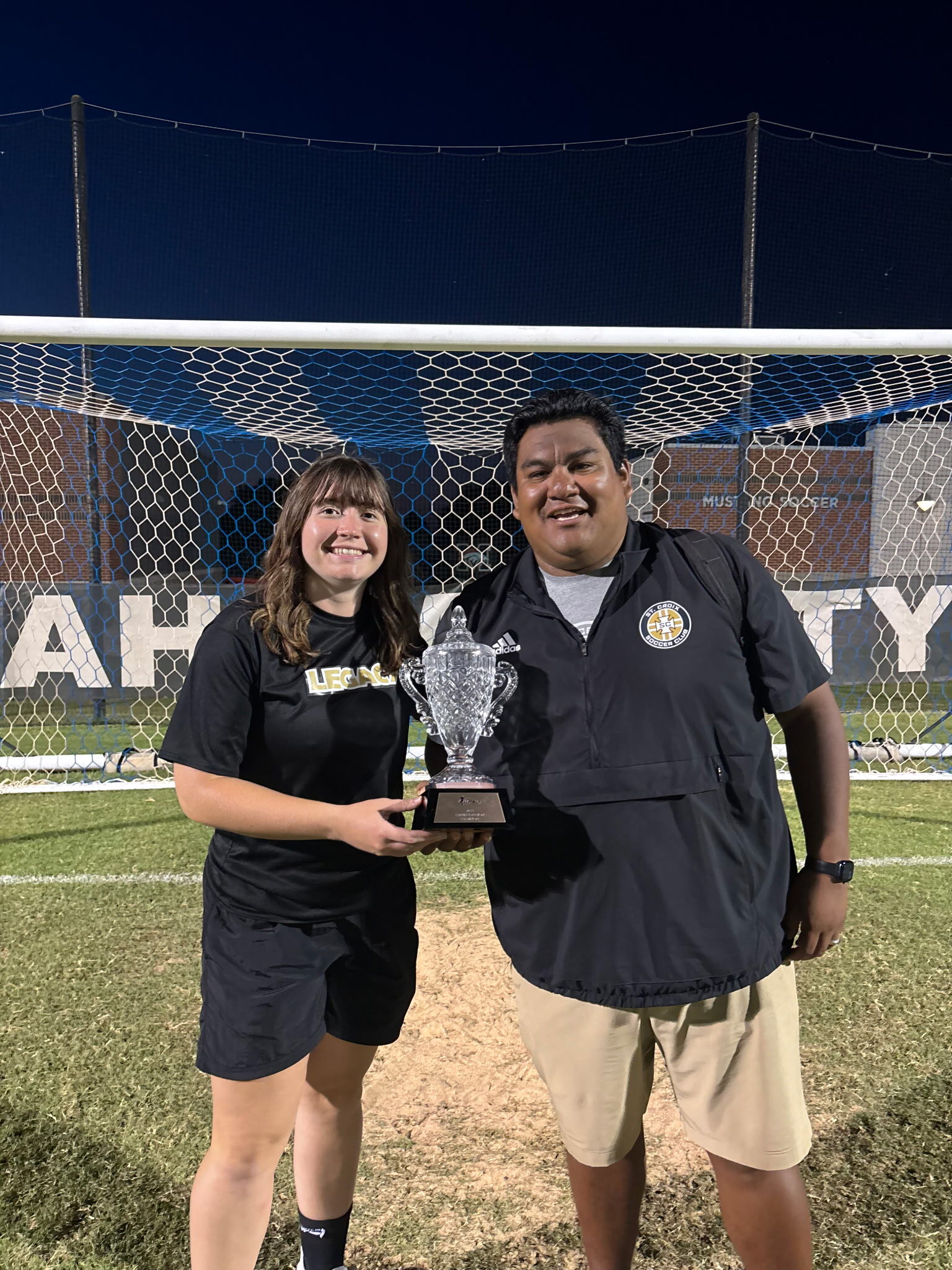
Marcos Rodriguez - Coach
Coming Up:
The Central Champions St Croix Legacy return to Central Oklahoma, 90 mins drive from OKC at Oklahoma State University and face the Eastern Champions Sporting CT at 6pm on Friday.
The Western Champions (and defending champions) California Storm play the Southern Champions Chattanooga FC at 8:15pm on Friday
The WPSL Championship is at 7pm on Sunday.
NPSL North Playoffs Review
Wednesday
The games were both punctuated by hydration breaks, with the temperatures in the 80s.
#2 Siouxland United FC 2-0 #4 Sioux Falls Thunder FC
The two sides split the regular season series with a win each, however the wins were not equal - a last kick win for Thunder having trailed in the 80th minute versus a 7-2 hammering by the Outlaws.
The home side broke through in the 10th minute as Dariel Contreras squared it for João Rocha to add to his healthy tally for the season. Thunder finished the half on the front foot, high pressure forcing a corner and a shot on goal, just wide but it remained 1-0 to the Outlaws at halftime.
It only took the hosts five minutes after the break to widen their lead, Contreras finishing off a box-to-box break with a 30 yard sprint to connect to a pass from Keitatsu Yoshida.
As the #2 seed in the North, Siouxland would need a Joy Athletic win to set up another home game. 430 miles Northeast, the Goats were threatening an upset.
#1 Duluth FC 2-3 #3 Joy AC
Duluth won one (rallying from 1-0 down to win 4-1) and drew one (which Joy should have won) in the regular season series. The home standing BlueGreens started the match on fire and were 2-0 up within 5 minutes with goals from Alex Ruiz and Liam Pritchard, but Griffin Price got one back for the visiting Goats in the 20th minute and it was there it stayed at half time.
In the 52nd minute, Goalie Alexandre Paredes and defender Juande mixed up for Duluth and a Phil Caputo cross found its way through to Christopher Plaza Alvarado for the equalizer. In the 66th minute, Joy broke free down the left and Carver Tierney dribbled deep into the box before slotting the ball into the far side netting for the go-ahead goal. Constant pressure from the home team founded on the shores of the Goat defense.
Saturday
NPSL North Conference Final - #2 Siouxland United FC 3-0 #3 Joy AC
As last year, it is only the winner of this match who can claim the title of Conference Champions. Duluth FC won last year and made it to the National Semifinals but this year saw a first time champion crowned.
Joy AC had the only real chance of the opening half an hour , but Siouxland keeper Will Devine smothered it. The Goats arguably had the better of the opening half but neither team had broken through at half time and the home side recovered their composure at half time and João Rocha added to his goal scoring streak with barely two minutes played in the second half, connecting to a breakaway pass to put the Outlaws ahead.
Outlaws head coach Alex Trent said the team "just needed a reminder to relax". The second half saw the home side gaining more control but still not able to completely put away the Goats until the 67th minute when Hayato Takayama latched on to a ball over the top of the Goat defense. Substitute Christian Piewe made it 3-0 after capitalising on a turnover by Joy in their own penalty area.
Reflecting on the season so far, Coach Trent said:
Happy for the club and everyone who has been part of it. Looking forward to a big challenge on Wednesday and more memories with this group.
Coming Up
Midwest Regional Playoffs
We look at the mini-tournament here
NPSL Midwest Regionals Preview
Midwest Regional Playoffs (# = Regular Season points per game ranking)
- 3 conference champions in region qualify (Central States [#9 Michigan Rangers], Great Lakes [#7 Flower City Union} and North [#19 Siouxland United])
- Teams are seeded 1-3 based on regular season points per game
- Semifinal on Wednesday, #2 Michigan Rangers FC hosts #3 Siouxland United FC in Grand Rapids, Michigan.
- Final on Saturday, #1 Flower City Union hosts the Semifinal winner in Rochester, New York.
WPSL Central Regionals Preview
The hosting assignment is rotated across the Conferences, and this year falls with the Midwest Conference, whose winners (in epic fashion) were Oklahoma City FC.
That means a bumper diet of football in the state, first on July 12 and 13th at OKCFC's home, a half hour West of Oklahoma City in Mustang, OK.
Sean Jones co-owns Oklahoma City FC with his wife, Penny. He spoke to us today about the prospects of the hosts:
We have a very young but very talented group of young women who have worked extremely hard for their success on the field this season. They have overcome some adversity on getting to this point and based on this season, I would say that if we play well, we will be competitive in every game we play here on out.
I do believe we have not only very talented, hardworking players, but as they demonstrated in the Conference Championship, they have a great deal of “grit” and determination. I also believe that we have one of the best coaching and administrative staff’s in the league and they work extremely well together which has resulted in a group that has come together in a very short period of time and are truly a “TEAM”.
I truly believe that we have a very good opportunity in front of us if we play well, however we know that at this point in the season, every team is very competitive and there should be some great games this weekend!
Joining them from the Midwest Conference are a wildcard team, Union KC, who were selected after both Mountain Conference qualifiers opted out of postseason play. We last saw UKC last year, when they lost in the semis to FC Pride.
Director of Coaching Dan Naidu spoke to us as the games approached:
We’re grateful for the opportunity to compete in the WPSL playoffs for the 2nd year in a row. The team has grown stronger every week—playing with purpose, unity, and resilience. We believe in our ability to compete with the best and are excited for the challenge ahead.
Austin Rise FC make the 400-mile trip north, having sealed the one-division Lone Star Conference with a 7-1-2 record and a goal difference of +10.
Co-Founder Bethany Cyrtmus-Davaul had this to say about her club:
Capturing back‑to‑back Lonestar Conference titles is a testament to this squad’s unwavering fight and belief. We bounced back from two late-season losses but the coaches and players stepped up and showed their real character with a dramatic 3–2 win on the road to solidify the conference championship. Now, with that momentum behind us, we’re returning to the Regional Playoffs and will head to Oklahoma City full of confidence and ready for an excellent weekend ahead!
St Croix has taken their place at the Central Regional table for the first time following a penalty shootout win, which capped a spectacular performance by Stillwater, MN's Pomona Pitzer Sagehen Hadley Johnson in goal for the Legacy. They also did so without the trailblazing Tatum Trettel, who had contributed the most goals during the club's regular season run.
Speaking to us after training this week, Executive Director Nathan Klonecki told us they have been studying film:
From what we have found, they are going to be a difficult opponent. We knew all these teams at this level and at this moment in playoffs.We always come in to a game understanding it is going to be difficult. Some of our players are not able to attend but that was the same situation when we went to Milwaukee.We have the mindset that the next player up. We know we will come and compete.
Saturday
5:30pm - St Croix Legacy v Union KC
8:00pm - Oklahoma City FC v Austin Rise FC
Sunday
7:00pm - Central Region Final
Coming Up:
The host site of the WPSL Championships, Neal Patterson Stadium at Oklahoma State University in Stillwater, OK is only a 90 minute ride from OKC. However, since there is a week between these two rounds, the teams all return home to the ordinary lives that players at this level have to balance across the Central Region before the winners essentially reprise their road trips.
NPSL Round Up: Week 7-8
Wednesday June 25th
Joy Athletic Club 2-1 Minnesota Blizzard FC
An ill-tempered and scrappy game ends the playoff hopes of the visitors and solidifies Joy in third. Minneapolis's Dimitri Nair burst into the visitors' penalty area from the right. He passed the ball onto Eagan, MN's Phil Caputo, who slotted his 12th goal of a Golden Boot-caliber season into the opposite side netting with only 19 minutes played. However, Joy struggled all night to finish off Blizzard, and the visitors were level in the 41st minute when Ulsterman Jadon Morgan expertly volleyed a cross into the net at the far post, after a corner was only partially cleared.
On the hour mark, a give and go down the left released Hopkin's MN's Griffin Price, whose pass was side footed home by Buffalo, MN's Carver Tierney. Even despite a red card, for violent conduct, by the St Thomas Tommie Bennett Kouame (out of St. Louis Park, MN) in stoppage time, Blizzard were unable to rally again.
Saturday June 28th
Joy Athletic Club 1-4 Sioux Falls Thunder FC
Things looked rosy for Joy as Phil Caputo scored a free kick, 30 yards out and dead central. However, the visitors scored four unanswered to vault themselves into a playoff spot. Nick North seized on a pass through the Joy defense in the 40th minute. Four minutes later, Thunder had the lead, AJ Bowman curling it past the keeper into the bottom corner.
Luis Waeschle added a finish to an intricate sequence down the right and Nick North added a counter attack goal in the second half.
Minnesota Blizzard FC 0-2 Siouxland United FC
The Outlaws spent an hour scoreless but sealed a win with goals from Dariel Contreras Portorreal in the 62nd, and Sergio Mijangos in the 80th minute, with a solo run down the right and a blast into the side netting.
Iowa Demon Hawks 0-1 Duluth FC
JJ Oyebamiji caught his own rebound after a point blank stop to secure the full three points for Duluth.
Wednesday July 2nd
Duluth FC 3-2 Siouxland United FC
It took half an hour, but an interception in midfield set up João Rocha for the opener by the visiting Outlaws, curled beyond Schenk in the BlueGreen net. In the 65th minute, a handball in the box allowed Duluth FC an opportunity to equalize from the spot, and the penalty kick by Felipe Oliveira slid underneath the Siouxland keeper. In the 81st minute, Siouxland United failed to clear for a period of two minutes and the ball leaked out to Peter Pearson, who blasted home from the top of the box. A late third by JJ Oyebamiji put the game beyond the reach of the visitors, even though United got their second in stoppage time through Sergio Mijangos.
Saturday July 5th
Siouxland United FC 1-2 Iowa Demon Hawks
With the seedings settled, Siouxland looked to stay healthy ahead of their rematch with Thunder. In the end it was the Demon Hawks who snuck the win. The visitors opened the scoring through an own goal in the 16th minute. Kyohei Eguchi equalized in the 31st minute but a Iowa PK by Jeanderson Pereira in the 70th secured the victory.
Coming Up:
The NPSL North Playoffs.
We look at the match-ups here
NPSL North Playoff Preview
#1 Duluth FC are the top seed despite a new head coach in Rio de Janeiro's Thomas Pazo. The perennial contenders for the North are defending Midwest Region champions and Liam Pritchard continues to torment opposing defenses. Felipe Oliveira and JJ Oyebamiji are their leading goalscorers, with 4 and 3 respectively.
#2 This is only Siouxland United's second season of existence, and following a 6-0-6 debut season, the Outlaws have been a surprise to everyone but themselves, beginning the season with two straight road losses but being unbeaten before losing to Duluth FC yesterday. Leading the way has been Rio de Janeiro's João Rocha, who has five goals, tied for second best in the conference. In the technical area is Alex Trent, who coached Dakota Fusion to an unbeaten regular season, before losing in the inaugural North Conference Final to Duluth FC. The Kansan has attracted a number of his players from 2024 to follow him to Sioux City.
We've overcome a lot of adversity as a group and we are in a great place now as a team with a strong bond together. We're learning how to win in different ways and winning has become the expectation. Our aim has always been getting home playoff games for our fans and club as we keep growing as a club in our second year and first year making playoffs.
- Alex Trent, Head Coach of Siouxland United FC
#3 The chance to be Siouxland United's opponents in the North Conference playoffs turned out to be a scrap between two wildly inconsistent teams, the Iowa Demon Hawks from Des Moines and the Sioux Falls Thunder. A new rule making it necessary for the matchups to be decided "on geography and/or other economic criteria" ensures that the teams from the South of the conference will meet each other.
Sioux Falls Thunder have a 4-1-5 record, with Aran Hernandez-Vivar having scored four and a rotating cast of others having added one to the record.
#4 Facing the BlueGreens in the Twin Ports are Joy Athletic, led by the Golden Boot nominee Philip Caputo, from Eagan, MN via Porto Alegre in the south of Brasil. He is the latest product of the Joy of the People "free play" system to make a name for himself in the NPSL, following Emmanuel Iwe (currently playing in the German 3.Liga) and Zinedine Kroeten (who is playing for Milwaukee Torrent in the Central States Conference). Buffalo, MN's Carver Tierney has ably assisted Caputo, to the tune of 5 goals.
I'll update this piece once I receive the quotes from the other clubs.
Coming Up - Wednesday
Duluth FC v Joy AC
Duluth won one (rallying from 1-0 down to win 4-1) and drew one (which Joy should have won) in the regular season series.
Siouxland United FC v Sioux Falls Thunder FC
The two sides have split the regular season series with a win each, however the wins were not equal - a last kick win for Thunder having trailed in the 80th minute versus a 7-2 hammering by the Outlaws.
Saturday
NPSL North Conference Final
As for last year, it is only the winner of this match who can claim the Conference Champions trophy. Duluth FC won last year and made it to the National Semifinals.
WPSL North Lakes Conference Championship Review - Legacy prevail at the death
FC Milwaukee Torrent 2-2 St Croix Legacy (Legacy win 6-5 on penalty kicks) - Wednesday July 2nd - Uihlein Soccer Park, Milwaukee, WI
While it is not a road game for Torrent, the hosts are based at Uihlein Soccer Park in the north of Milwaukee rather than the more centrally located Hart Park. The 600-mile round trip for the visiting club is three times the longest road trip they had taken in divisional play.
Add to that, the Facility Director told the teams and WPSL that the lights needed to be off at 11:30pm and therefore the match skipped over the usual Extra Time (and any stoppage time) and straight from 90 mins to a penalty shootout.
There was an hour-long delay for lightning before the game even kicked off and the stormy silence was broken by a rough challenge on Leyla Kelbel in the Legacy box, resulting in a penalty kick in the 20th minute. Kelbel's kick was stopped by Johnson but the ball dropped invitingly for the Wisconsinite, who tapped home the rebound.
Five minutes later, Ashlyn Skinner-Barrett broke free and added a second Torrent goal but Legacy were not to be rolled over. Torrent goalie Kate Hopma smothered an initial shot by Wren Van de Walker from the Legacy left but the ball is smuggled home by Amara Smith.
In the 67th minute, Legacy drove down the right, the ball was dribbled across and Wren Van de Walker added a goal to her earlier assist.
It would be last goal in open play as both sides played out a scoreless 20 minutes and then the ground rules got involved.
In the seventh round of PKs, defender Emily Hinze out of Mendota Heights, MN sidefooted the ball past Kate Hopma and the visitors prevailed. It was 11:35pm Central Time.
Speaking to us after the final whistle, St Croix Soccer Club Executive Director Nathan Klonecki said
With the time change, and the lightning delay and the halftime delay and down 0-2, (coming) back that is how they have been all year. It is fun to see that effort and desire pays off!
Coming Up...
St Croix take their place at the Central Regional table for the first time. The hosting assignment is rotated across the Conferences and this year falls with the Midwest Conference, whose winners were Oklahoma City FC. That means a bumper diet of football in the state, first on July 12 and 13th in OKC and then at the National Championships at Oklahoma State University in Stillwater, OK the following weekend.
WPSL Wrap Up: Week 6
Wednesday
MN Bliss FC 1-0 Minnesota Dutch Lions
Ella O'Keefe out of Plymouth, MN was the difference maker as she tapped home a corner at the far post after an initial shot was a kick of fresh air. The result places Bliss fourth, equal with a St Croix team that had played two fewer games. Minnesota Dutch Lions, on the other hand, continue their search for their first win.
Friday
Joy Athletic Club 0-4 St Croix Legacy
A dominant midfield performance by the Legacy sees the team from Stillwater area pick off Joy defense with two offside-trap breaking passes around the corner and two late tap ins, totaling two each for Lake Elmo, MN's Amara Smith and two for Shoreview, MN's Tatum Trettel.
Manitou FC 1-4 Mankato United SC
Mandy Elton opened the scoring in the 7th minute but hers would be the only goal for the home side. Local product Ella Huettl, Albertville, MN's Harlee Peltz, Scotswoman Hannah Duncan and St Peter, MN's Grace Dlouhy returned fire for the road team.
Sunday
Mankato United SC 0-2 St Croix Legacy
The visitors took a half-time lead after a Bella Meier free kick from midfield bounced and skipped its way through traffic and over Tea Opitz into the goal. In the 57th minute, Hastings, MN's Meier doubled the team's lead with a sumptuous side foot curler from the edge of the box. Mankato had moments of possession but no penetration into the Legacy box.
Minnesota Dutch Lions 2-0 Manitou FC
The Dutch Lions secured their first win of the season at their last attempt, with well struck goals by Natalia Coury (out of Arizona) and Serene Hamzeh (out of Iowa City, IA).
Coming Up:
The first ever North Lakes Conference Championship, which we look at here.
WPSL North Lakes Conference Championship Preview
FC Milwaukee Torrent v St Croix Legacy - Wednesday July 2nd - 8:30pm, Uihlein Soccer Park, Milwaukee, WI
This is a brand-new conference, and for the teams in the Land of the Lakes Division, it is also the first-ever Conference Final, as the Northern Conference had previously only had one division. Added to that, St Croix Legacy has played twice in the past week to even qualify for the Conference Championship. That scheduling quirk meant that the team from the Eastern side of the Twin Cities metro has played from behind in the standings for almost the entire season, with Salvo and the Thunder squad (who opted out of postseason play) setting the pace at the top and a competitive slate of team performance overall. Tatum Trettel of Shoreview, MN leads the way with 7 goals and Amara Smith from Lake Elmo, MN offering assists and 5 goals of her own.
Nathan Klonecki, Executive Director of St Croix Soccer Club spoke to us after they qualified:
We are excited to represent the North Lakes Conference at the WPSL playoffs next week.
In watching the FC Milwaukee Torrent team they are a strong team and we know it will be difficult but with this Legacy team we will definitely give all of our effort.The St Croix Legacy being in our 3rd year in WPSL we have had seen growth every year on and off the field. The roster is very young and using many of our St Croix SC youth players and then adding other local talent has been a fun season for everyone involved. The coaching staff (Marcos Rodriguez-Sporting Director/Head Coach, Phil Walczak- Asst Coach, and Kate Paetz- GK coach) has done a fabulous job!
In the Lake Michigan Division, it has been a three-way fight for the one spot between FC Milwaukee Torrent, Milwaukee-based Bavarian United and Green Bay Glory. The battle went down to the last week, when Torrent, Bavarians and Glory faced each other directly. It was Torrent that emerged from the gauntlet, shutting out the Glory's division leading offense on their way to an unbeaten regular season. They boast a longer history than Legacy, having joined the WPSL in 2018 and won their Conference in 2023.
Women's Head Coach and Club Owner, Andreas Davi spoke to us before the match:
We are happy that we won the division for four years in a row now and look forward to the conference final. The roster is very deep this year and it will be interesting to see where this journey goes.

